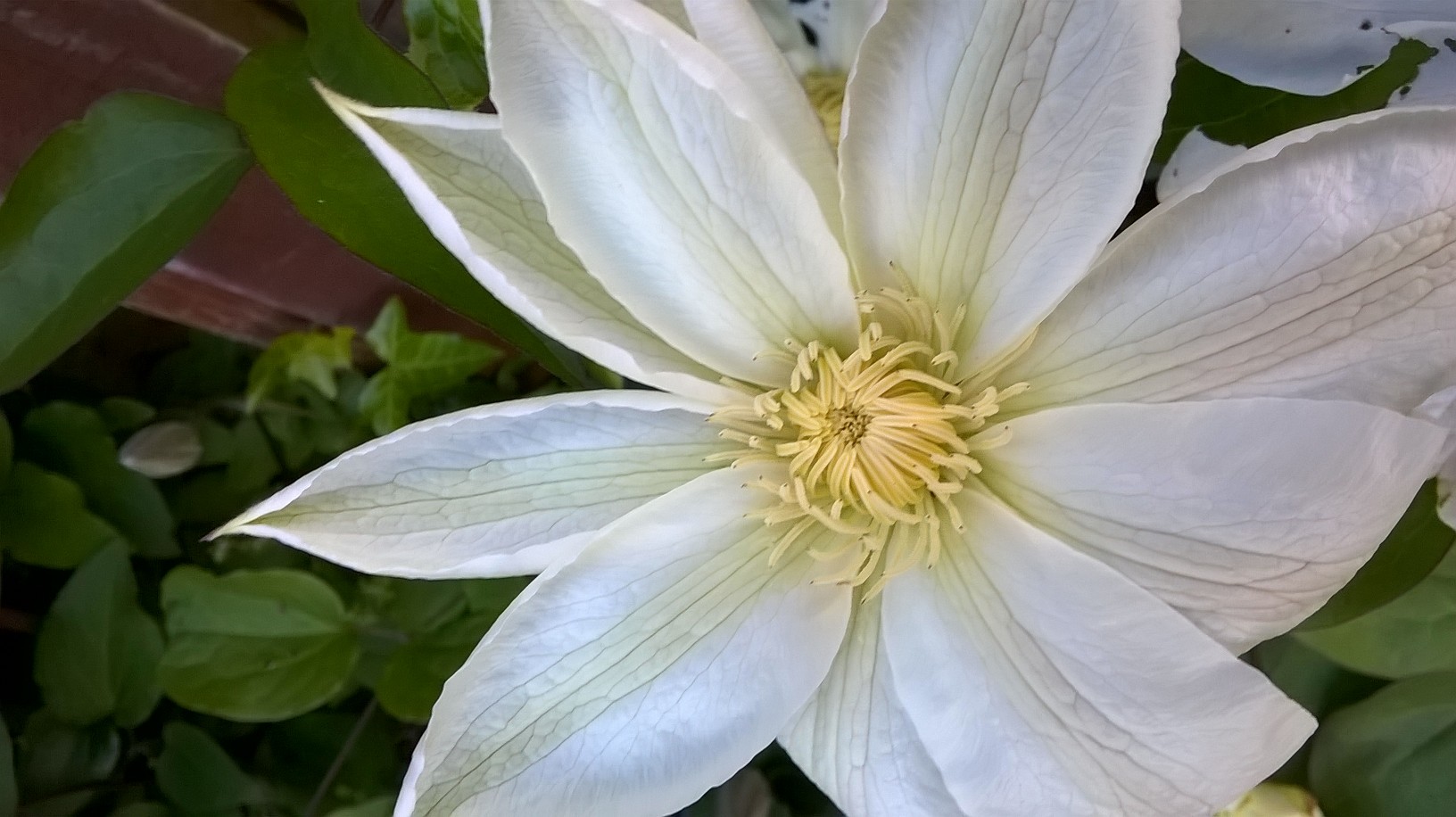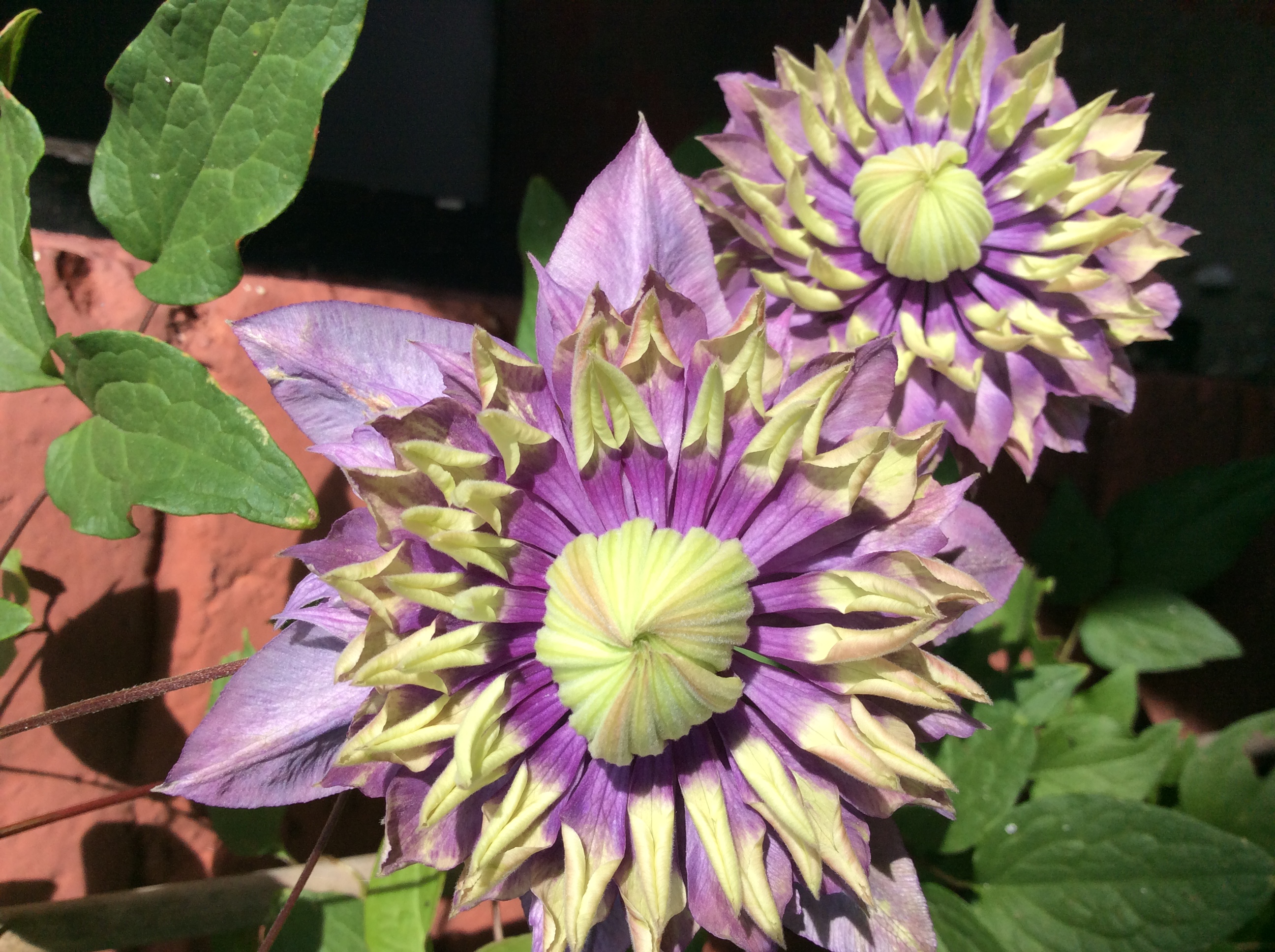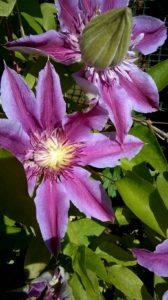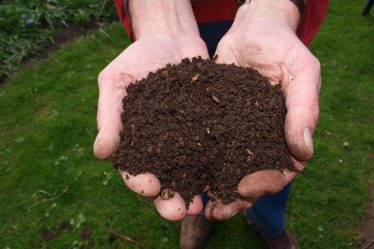
How to Grow A Clematis
Clematis are one of, if not the most popular choice of climbing plant, as they are easy to grow and maintain. They are reliable, hardy climbers offering colour, scent and seasonal interest.
I am often ask me how to care for clematis plants. They are not high maintenance plants, you only need to remember a few basic rules which I will cover in this article, in order to have a succession of beautiful blooms.
Choose wisely and you could have various clematis in flower every month of the year from the aptly named Winter Beauty or Freckles that flower from December through to early spring, March flowering Clematis Avalanche or Pink Flamingo in April followed by the riot that are the Clematis Montana varieties in white, pale pinks and mauve, to name a few.
Through the summer and autumn there is a blaze of colour from clematis such as Clematis Taiga, Countess of Wessex and General Sikorsky.
Evergreen green clematis are also valuable plants to grow for all year round coverage and a plethora of flowers to give interest in the winter.
These hardy, tough plants are a staple for most gardens, they cover a multitude of sins when grown against unsightly outbuildings or walls, fences and pagodas. They will ramble happily through trees and hedges and look well, partnered with other climbers like roses. Growing clematis vines is easy and rewarding with thousands of cultivars to choose from.
With such a wide choice of these versatile climbing vines it is easy to see how Clematis are a firm favourite with gardeners.
Pruned and maintained correctly clematis will give a show stopping display year after year. Always use clean, sharp pruning secateurs. Best Secateurs review

When Should Clematis Be Pruned?
Clematis are classed in three main groups in terms of when they flower. Regular pruning keeps the plant healthy, encouraging strong new growth and stops them becoming a tangled mess of old, possibly damaged, woody stems that won’t flower so well. The group your Clematis is in will determine when and how to prune it. See the Garden Calendar for more information on which plants to prune and when, throughout the gardening year.
Pruning Group 1
Mid to late spring, once all risk of frost/snow has gone.
Pruning Group 2
February and again after the first flowering.
Pruning Group 3
Late January and February

When to prune clematis plants
How To Prune Clematis
Group 1 Clematis
These are early flowering clematis that need a light prune, flowers are produced on the previous seasons growth. A light prune of faded flowers is all that is required. As they become more established training of the stems is needed for you to direct it where you want it grow.
All new plants should be pruned back hard in their first spring. Prune stems to a pair of healthy, new buds to about 30cm from the ground
Established plants:
Thin out old and damaged stems.
To renovate, cut all stems back to a pair of healthy new buds to 30cm from the ground. This will result in new, vigorous growth. Tie in new stems to the support framework.
Clematis Montana varieties only need a light prune with shears after flowering.
Examples of Group 1 Clematis
- Montana
- Armandii (very light prune only)
- Clematis ‘alpina’
- Clematis cirrhosa (winter flowering, evergreen clematis)
Group 2 Clematis
Clematis that belong in group 2 are the big, blousy hybrids that flower through summer. Pruned correctly they will give you a second flush of flowers.
New plants should be pruned to a pair of new buds about 30cm from the ground.
Established plants:
Prune out old and damaged stems in late winter.
Prune again after flowering by pruning some of the stems to new buds or growth.
Overgrown plants can be pruned back gradually over several seasons to maintain a desired size and coverage. Alternatively prune back more rigorously to between 30cm and 100cm every three years or so.
Examples of Group 2 Clematis
- Taiga
- Niobe
- Miss Bateman
Group 3 Clematis
For new plants cut back all stems to a pair of new, healthy buds about 10cm to 30cm from the ground.
Established plants:
Some of the small-flowered clematis can have the stems thinned out, thereby leaving most of the attractive seeds-heads.
They can also be left to ramble through trees or pergolas without any pruning.
Examples of Group 3 Clematis
- Jackmanii
- Countess de Bouchard
- Star of India
If you have a lot of pruning to do, which in large gardens is highly likely, or you struggle with hand, finger or wrist injuries or aching joints then you might want to consider a set of cordless electric secateurs. These are safe and easy to use and take away the strain of joints that excessive pruning can cause.
How To Plant A Clematis
The best time to plant Clematis is spring, early summer or early autumn.
Dig a hole twice as deep and wide as the pot or root ball, a few inches from where your plant support is.
Set your plant in it and bring in the removed soil with added compost or organic matter. Firm down the soil around the plant. Water well and add another inch or so of soil as it settles.
If the plant does not yet reach the support then put a few sticks or short canes in the soil, angled to the support so that the young early shoots have something to twine around.
Clematis like plenty of water and do better with a good watering once a week rather than short drinks on a daily basis.
Keep their roots shaded by placing some stones at the base of the plant or by adding other, smaller plants around the base.
Hard pruning of groups 1 and 2 will result in loss of flowers for at least a year.
Position: Full or part sun/part shade.
Hardiness: Mostly fully hardy.
Soil type: Chalk, clay, loam, sandy. Moist but well drained.
What Are The Best Clematis To Grow In Pots?
If you have limited space, don’t despair, you can still enjoy some beautiful clematis as there are many that do very well in containers. These are just a few examples for you to consider.
- Fleurie
- Cezanne
- Parisienne
- Countess of Wessex
- Oh La La
- Ice Blue
- Rebecca
Conclusion
These beautiful, versatile climbing plants add a wealth of charm to any garden, as some can be grown in containers, they can be included in any garden, large or small.
Their characteristic open or bell shaped flowers are a magnet for pollinators, attracting butterflies and bees into your special outdoor space.
Whatever your garden style, preference or colour scheme there is a Clematis that will fit right in, helping to add to the wow factor in your garden. Bringing your outdoor space to life.
I personally wouldn’t be without them.

For a selection of other equally lovely climbing plants :- hardy-climbing-plants
Best Place to Buy Clematis
I have mentioned several hybrids and cultivars of Clematis throughout this article but there are many, many more beautiful choices in terms of colour, flower shape and fragrance. Some have dainty bell like flowers, others are huge double/triple pet taller flowers, almost like rose blooms.
The following are all reliable suppliers of quality plants.
Thompson and Morgan Suppliers of award winning plants, they have an extensive range of lovely Clematis.
I hope that this article proves helpful to you in choosing and how to care for clematis plants, please share it with friends, family and social media. For more details, gardening know how, tips and advice check out my How To Do pages.
Any queries or views can be posted in the comments box below, I will reply as soon as I can.
Happy Gardening





Thank you for this beautiful post. I have always loved flowers all my life because they’re one of the beautiful things in this world. But clematis is really awesomely beautiful because of its extravagant colours it normally adds to the garden. I really loves the way the Clematis attracts the butterflies too. The three groups to prune the clematis are really outstanding. This post is really lovely
thank you very much, I am happy that you like this post.
Thanks for writing this article on clematis how easy to grow and maintain. I find is so Full of information on how to grow clematis.
i must say am impressed that there is so many type of clematis to grow that I don’t know of or know how to identify them.i will like to grow some clematis this year.what is delaying my process of planting any flower for now is the fact that I have not clear my backyard.
Hi,
Thank you for comments,
you really must try to get on with clearing your backyard, then you can have many beautiful plants.
I have tried to plant clematis in the past years and I have made a whole lot of mistakes and I have actually learnt from my mistakes too. I first planted my clematis at a wrong season not knowing the best time to plant my clematis. The second year, I had to plant on early summer and it grew well but I didn’t use stick to support it to twin around which I should have done and I didn’t even water it as appropriate.
Now am doing better coz I have actually learnt from my mistakes.
Hello, thank you for your comment. Try and try again with your plants, clematis do like to have water!
Your posts just get better and better keep up the good work
Thank you kindly for reading and taking the time to comment.
Louise
Hi,
Thank you for taking your time to share with us how easy to grow and maintain Clematis. I found great information on how to grow a clematis which I will gladly share with a friend of mine who is very good at planting flowers, l have never seen a clematis in his garden probably this information will help him start planting some.
Great post and thank you once again for sharing, stay blessed
Hello Fiona, thank you for your comments, I am happy that you found the post useful. Clematis are very easy to grow which adds to their popularity, easy for a beginner to try with great success.
Thank you for sharing.
Louise
I only just started taking conscious care and control of my outdoor space. I came across a recommendation to utilize the clematis plant. I have to say, this is exactly what I needed to understand the basics of how to grow them. Clearly, they’re easy to maintain and that is a very big draw for me since I have a very busy schedule. I’m glad you shared.
Hello Leo,
Thank you for adding your comments to my post on how to grow a clematis. I am happy to help in any way so I am very pleased that you found my article useful. I hope you now have inspiration to grow and enjoy these lovely plants in your own garden.
Best Wishes
Louise
Hello there,
Thanks for sharing this very vital information. I know it would be of great help to the public as it has been of help to me. Planting is one of my hobbies and I must tell you it’s a very nice skill to have under your grasp..clematis is very rare kind of plant here, although it’s common in some places, but having it in my garden would be very nice. thanks once again for sharing these tips, they help a lot.
Hi Feji,
Thank you for your comments. Clematis are really lovely plants to include in your garden as they are easy go grow and will give you lots of colour and scent. Enjoy them.
Louise
Hi Louise, thank for sharing your advice on these magnificent flowers. Being such a hardy, low maintenance plant I can understand why they are so popular.
The clematis plant clearly enjoys a good drink and some warm sun on a regular basis. How well do the petals stand up to the sun? Do they ‘brown’ quickly? Also, how often do clematis bloom?
Thank you Fluffy Duck for your comments and interest. Yes I agree they do need plenty of water and sunshine, they love the sun and flowers last a long time. Summer flowering clematis will flower twice if pruned and cared for correctly. Some like the winter flowering “Freckles” will go on flowering for several months.
Best Wishes
Louise
Many thanks to you for giving us such a wonderful article and the flowers I love so much, and I think it’s hard to find people who don’t love flowers. And clematis tops my list of favorites .I planted it in the beginning of summer last year and in the new year. I will put it again next summer. Clematis colors are really nice and butterflies are very attracted to me, just like they are. For the Clematis, my garden really adds other colors and enhances the beauty which makes me very happy .I care about it and trim it at the right time, but after reading your article I have benefited more because I learned a lot from your article which is very useful to me.
Soon I’ll be clematis gardening again and will definitely share with you new experiences .
Hello Shanta,
Thank you for your views on Clematis and for sharing your gardening experiences. I should enjoy to see your photos of the garden and clematis.
Happy gardening
Louise
The Clematis genus is made up of about 300 plants similar to Buttercups and yes some do have very beautiful blooms. The one i like to see the most is the Etoile Violette. I love the pretty purple color flowers. Thank you for this post on How to grow a Clematis. I will definitely be sharing it with all the people i know who like having a garden full of beautiful blooms.
Hello Donald,
Thank you for your comments. Yes clematis share the same genus as buttercups, and grow just as prolifically! Etoile Violette is indeed a lovely choice. I thank you for sharing this article.
Happy Gardening
Louise
I’ve heard of Clematis plants, how beautiful and charming they are and want to have it in my home. But then I will want to grow this by myself since I have a garden. I’ve been thinking of where to start from until I decided to do a research online. Your article has really proven to be very useful and has shown all it takes to grow and how to care for Clematis plants. This is really informative.
Hello James,
Thank you for your comments, I am happy that you came across my website and that you found this post on how to grow a clematis useful. I hope you have fun planting some and enjoy them.
Happy Gardening
Louise
One thing I like about Clematis plants is that they are not of high maintenance as they are very easy to grow and maintain. But then, one must be willing to know the basics on how to grow it successfully of which you’ve given in detail. I like the fact that it can be grown in a pot which will add beauty in my home. I’ll share this with my gardener friend.
Hello Leon,
Thank you for your comments, Clematis do look and perform just as well in pots as in the ground. So I hope you do have ago at growing some.
Thank you for sharing.
Louise